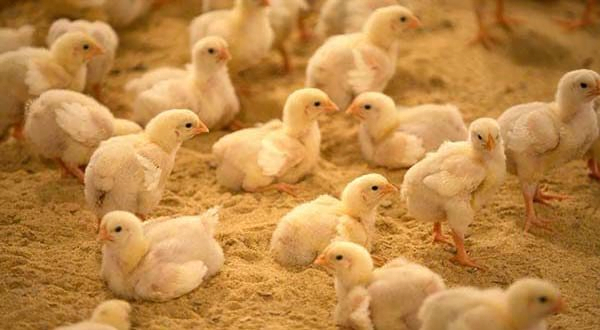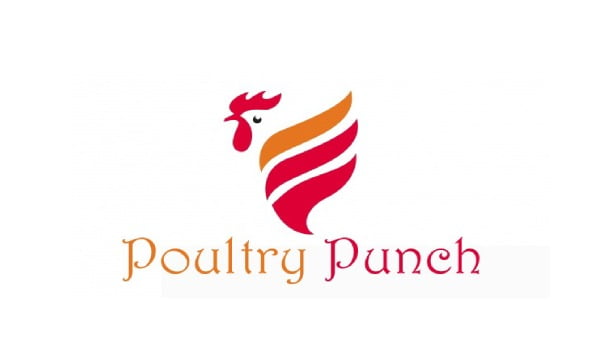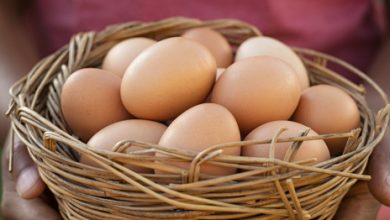Management of ammonia emission in poultry house
Dr.G.KALAISELVI *, Dr.M MANIMARAN Assistant Professor & Associate ProfessorTamil Nadu Veterinary and Animal Sciences University, Chennai -51 , kalaiselvigovindan1981@gmail.com
Ammonia (NH3) is an invisible, water-soluble alkaline gas, which is hazardous to the environment as well as human. Ammonia contamination may cause environmental problems such as acidification and eutrophication leads to defective vegetation systems, disrupt biodiversity and reduce water quality. Livestock manure management (collecting, storing and spreading on land) accounts for almost three fifths of agricultural ammonia emissions, while agricultural soil emissions account for two fifth. Ammonia in a poultry house comes from the birds. Unused nitrogen is excreted in poultry fecal dropping as uric acid (80%), ammonia (10%), and urea (5%). When ammonia gas is exposed to moisture, it reacts and forms a basic, corrosive solution called ammonium. This aqueous ammonium solution causes harm to birds. The ammonium corrodes the lining of chickens’ respiratory tract and paralyses or even destroys the cilia of the epithelial cells of eyes and nosal mucosa. Lads to accumulation of mucus on the mucosal surface of the trachea cannot be cleared by the cilia and bacteria become trapped. Finally the bacteria reach the lungs or the air sacs and they cause infections.
The concentration of ammonia in some broiler houses may easily exceed 30-70 ppm, particularly in winter time. The EU directive (Council Directive 2007/43/EC) states that the NH3 concentration should not exceed 20 ppm over any eight-hour period or 35 ppm over any ten-minute period during the poultry production cycle.
High level of ammonia in poultry house can result in poor bird performance & health and loss of profit to the grower or integrator. Uric acid & organic nitrogen (N) in the bird excreta & spilled feed are converted to Ammonium (NH4) by the microbes in the litter. Depending on the moisture content, temperature and high pH of the litter, a portion about one-third of Ammonium will be converted into ammonia (NH3).
Ammonia is a pungent gas that irritates the eyes and respiratory system and can reduce resistance to infection in poultry. At high-enough concentrations (above 10 ppm), ammonia will reduce feed efficiency and growth while increasing mortality and carcass condemnations. The result is economic loss to the grower and integrator.
The deep litter method is one sustainable method of managing chicken litter in the poultry farming that many small poultry entrepreneurs use because
- It does not take a lot of time to manage.
- It ends up into compost manure – the high nitrogen manure is “Green”.
- Devoid of cage fatigue.
- It´s safe and bird enjoy natural environment to produce quality Carcass.
- Less chances of egg breakage in case of layers.
But farmers have following hurdles also as all poultry disease´s primary source is pickup from career birds and litter becomes potential store house for preserving the disease and its vectors. If litter bedding is on muddy floor ammonia imitation will be much higher due to moisture contents of excreta and floor. Pathogenic bacterial, protozoan & fungal load in litter will be creating threat of disease incidence. Availability of required litter bedding material on desired time and increasing cost of material will be a threat. Litter mites & pest problem with old litter. Even fresh litters are source of fungal & bacterial career. Farmers mostly use for litter on the floor like rice husk, wood dust, sawdust, hay, straw and silicon sand material etc as per the local availability and their low economical value.
One of the most basic principal of avian digestive system is that what goes in must come out. The chemical & physical composition of litter is highly variable due to differing bird species, diets, bedding retention times and other farm management practices. Hard fiber litter materials have been demonstrated to improve gizzard development and improve feed conversion efficiency without any effect on feed intake or weight gain. Poultry litter is broadly comprised of protein, carbohydrate, lipid & fats, with carbohydrates responsible for the majority of biodegradable materials in the form of cellulose, starch & sugar and loaded with beneficial as well as pathogenic bacteria and fungus. Monitoring litter health is essential parameter of poultry flock health because most gaseous pollutant originates from the breakdown of faecal matter which intensifies with the growing ratio of moisture, temperature and pH level.
Poultry litter is re-used for succeeding broiler flocks to reduce the running cost since bedding / litter material have become costlier these days, so there will be greater environment stress and challenge to control ammonia problem. The poultry litter has an average pH of 8.0 – 9.0, this is considered a high pH or alkaline. The pH can influence the ammonia volatilization. Ammonia release from litter is minimum when litter pH is below 7; emission exceeds when pH is 8 and above. At litter pH lower than 4.6, the economically devastating bacteria like E.coli, Salmonella, Clostridium, and Campylobacter do not grow.
Effects of ammonia on birds’ health and performance
A high concentration of ammonia in the poultry house has adverse effects on the health and performance of birds. However, it is not easy to measure the magnitude of such adverse effects. Birds are not usually exposed to a very high concentration of ammonia for long periods, unless there is poor ventilation, or birds are fed a nutritionally unbalanced diet. Recent research has revealed that many molecular changes can take place when birds are challenged with a high concentration of ammonia, even for short periods. The presence of excessively high levels of ammonia in the air, for any length of time, will cause discomfort for the birds. Ammonia is a strong oxidative stressor that can cause inflammation. Trials have shown that high concentrations of ammonia can alter the normal organ function of animals, impair energy metabolism, induce cell apoptosi, and cause mitochondrial damage in the mucosa of the gastrointestinal tract.
Poor growth rate and performance of birds growing in high atmospheric ammonia concentrations is strongly related to the influence of ammonia on birds immunity and their intestinal histomorphology. Exposure to high ammonia concentrations negatively affects the development of the birds immune system as well as intestinal villi and mucosal proteome.
Ammonia management in poultry production
- Ration composition and diet management, provision of a balanced, complete diet is of the highest importance. Problems occurring due to high-performance genetics, feed formulation and medication can lead to production of wet manure causing increased ammonia and odor release alongside reduced broiler performance and feed efficiency.
- Optimize the poultry stocking density to help limit excessive moisture in the poultry house so reducing anaerobic processes.
- Adjust the ventilation rate – if ammonia levels increase, more ventilation is needed. However, this should only be in accordance with the climate and temperature of the poultry house.
- Temperature adjustments should be made relating to house climate and welfare.
- Improve nutrient digestibility. This could also be achieved by supplementing diets with additives.
Poultry dietary management is the most important preventative measure. The total amount of nitrogen within the birds’ feces can be considerably reduced by formulating diets based on the birds’ amino acid requirement instead of on total crude protein. As the percentage of crude protein in the diet is lowered and replaced with conventional sources of protein (e.g. soybean meal, sunflower meal) with synthetic amino acids, nutrient retention is maximized. Reducing dietary protein by 3-5% may cause a reduction of 60% or more in total nitrogen excretion from broilers and laying hens.
A well-balanced diet contains highly digestible ingredients and functional feed additives that can improve the digestibility of nutrients in the small intestine of birds. Inflammation caused by stress may dramatically decrease the ability of the birds to digest and absorb nutrients including proteins. The inflamed and unhealthy intestine is not capable of absorbing digested feed, even if the digestion has been enhanced by exogenous enzymes. Keeping the gastrointestinal tract healthy and functional during the whole growing period is key to reducing the excretion of undigested and unabsorbed feed in the feces which will in turn reduce the ammonia volatilization within the poultry house.
Methods of reducing ammonia production from poultry
Phytogenic Feed Additives (PFAs)
Phytogenic feed additives are capable of increasing the digestibility of nutrients within the gastrointestinal tract and reducing gut inflammation caused by stressors. These two important effects of PFAs may considerably increase the gut integrity of the birds. Phytogenic feed additives also modulate gut microbiota, minimizing the negative effect of harmful bacteria on the gut. Less undigested and unabsorbed nutrients will be passed to the feces from a healthy gut, which means less nitrogen excretion from the birds to the environment. Less nitrogen excretion reduces ammonia volatilization within the chicken house to a great extent.
Feed ingredients
In one study, the inclusion of soy hulls, wheat midds, or corn in diets for laying hen, has reduced the total ammonia emission and the rate of ammonia emission from manure reduced up to 50%. This result has been attributed here to a shift in the partitioning of nitrogen excretion from uric acid to microbial protein and a reduction in manure pH stemming from an increased content of microbially produced volatile fatty acids causing a shift from ammonia (NH3) to the more water soluble ammonium (NH4) thereby reducing ammonia emission.
Feed processing
Feed processing can affect nutrient availability and gas emissions. The fine grinding of feed increases the grain particle surface area and allowing digestive enzymes to breakdown the feed more easily and increase nutrient utilization. Reducing feed particle size from 1,000 to 600 microns increases dry matter and nitrogen digestibility by 5%-12% and lowers the amount or nitrogen in manure by 20%-24%. Excessive grinding should be avoided as it causes gut motility and health problems.
Processing of feed into uniform durable pellets also affords significant benefits. The pelleting process increases the bulk density and reduces the segregation and dustiness of the feed and reducing the losses during handling, transportation and storage. Feed conversion efficiency is much improved when birds consume pelleted rather than mash feed because it results in less feed spillage during consumption. But the heat treatment associated with pelleting improves feed digestibility by deactivating anti-nutritional factors and hence improves performance.
Feed additives
There are some additives that can be added to the diet to sequester ammonia. The zeolite, a type of mineral with a porous or lattice-like structure added in the diet will binds ammonia in the faeces and prevents it from being emitted into the air.
The acidification of the diet may help alleviate the ammonia production problem. Addition of gypsum (CaSO4) or calcium benzoate or lowering the dietary electrolyte balance. The acidic diet will result in acidic manure causing ammonia (NH3) to be converted to ammonium (NH4), which is more water-soluble and not readily emitted into the air. Another way to alleviate the ammonia production problem is to prevent uricase activity in the micro-flora in poultry manure. Egg yolk antibodies are economic alternatives for administering in feed to poultry. In order to use this dietary strategy effectively a well balanced feed formulation and a more practical way of delivering the antibodies in feed remains to be developed.
Phase feeding
Phase feeding allows producers to formulate diets to more closely meet the bird’s amino acid and other nutrient requirements and reducing feed loss and nutrient excretion. In another study, the multiphase feeding reduced ammonia emission by 16%. In recent years some feed processing companies able to produce up to 17 different feed phases, thereby minimising nutrient deficiencies and excesses.
Minimizing feed and water wastes
Poultry will waste a significant amount of feed if feeders are overfilled, adjusted too low, or poorly designed. In this case faecal N may increase by 1.5% for each 1% increase in feed waste and ammonia emission rate will subsequently be increased. Feeders should be designed in such a way that it is difficult for the birds to push the feed out of the feeders. In this way, the feeder height should be adjusted so that the top of the feed pan is level with the bird’s neck with the feed fill level to be adjusted to only 25% of the feeder pan.
Too much water in the house also results in excess ammonia emission and poor air quality. So the nipple drinker system should be adopted for better control over water intake and wastage and also excretion of wet droppings should be avoided. The poultry diets containing drugs such as coccidiostats are associated with metabolic changes that are often associated with high water content of faeces. A change of feed ingredients will frequently overcome this problem. The dietary crude protein level should be reduced and the diet should be formulated based on amino acid requirements rather than crude protein. One extra benefit of reduced protein will be the reduced requirement for water intake because excess protein requires water as part of the excretion process. If the protein level in the diet decreases by 3% means, 8% reduction of water consumption, results in drier litter and consequently less moisture and ammonia in the air.
References
Miles, D.M., S.L. Branton and B.D. Lott. 2004. Atmospheric ammonia is detrimental to the performance of modern commercial broilers. Poultry Science 83:1650-1654.


